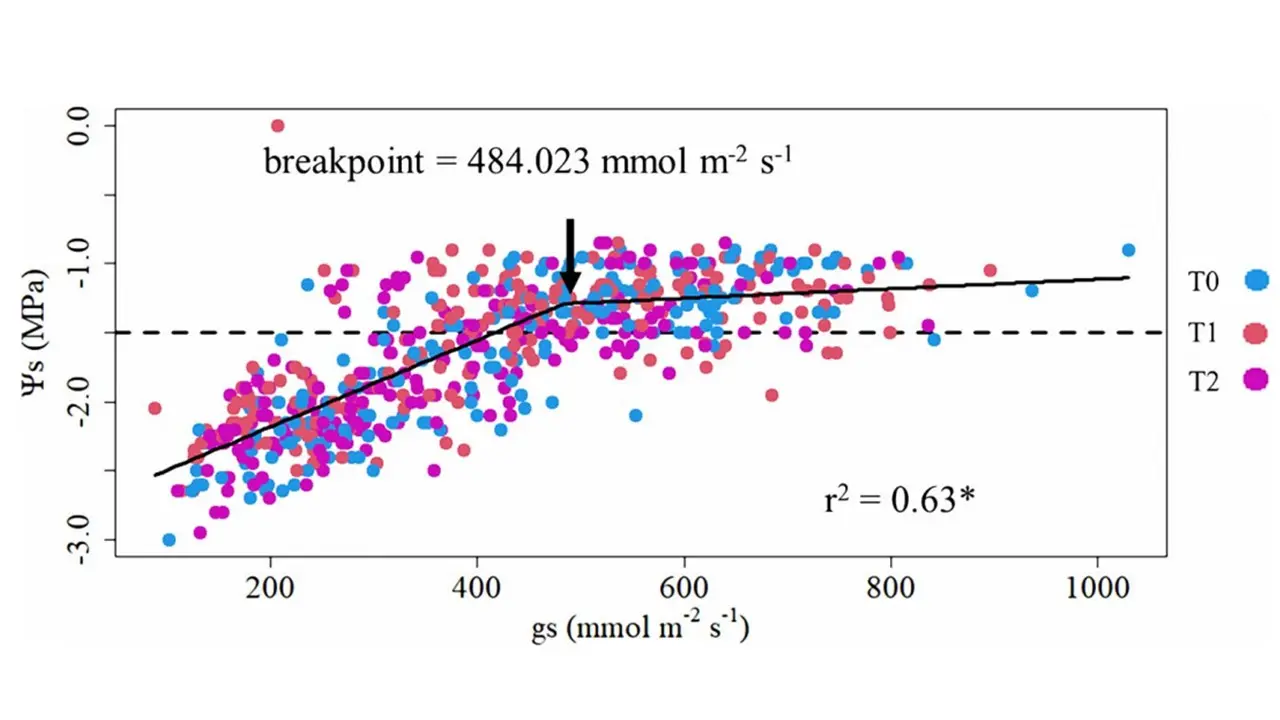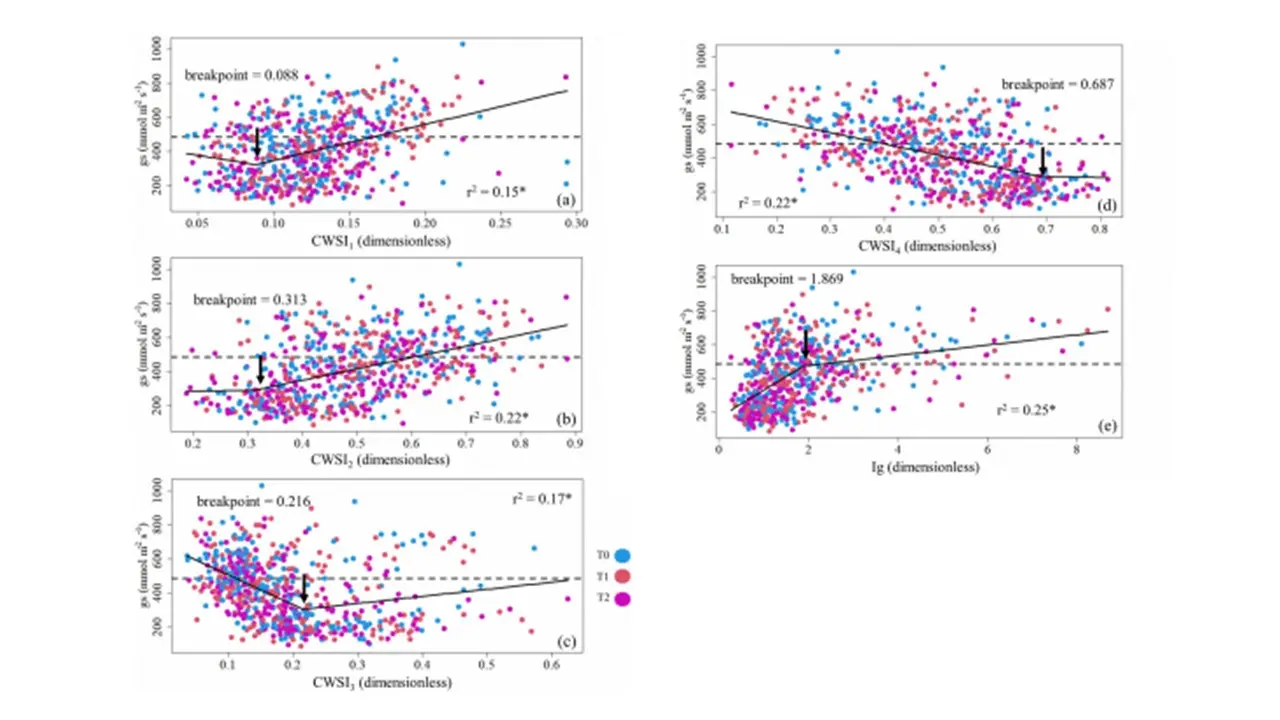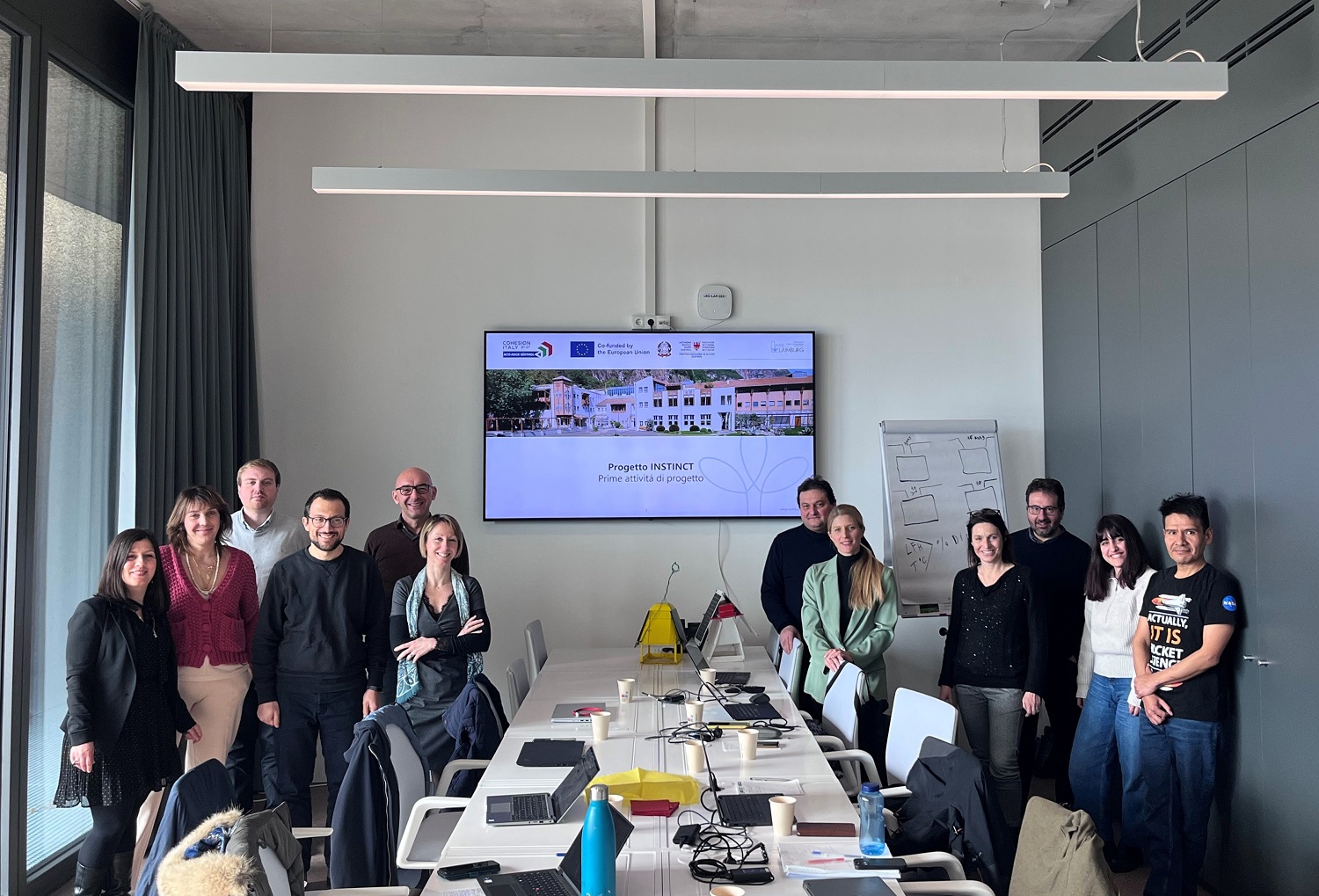Thermal imaging for monitoring water stress in "Regina" sweet cherry trees
Irrigation management is increasingly important for modern agriculture, especially in areas with limited water availability and in climate change conditions.
In this context, a recent study evaluated the effectiveness of various physiological indicators based on thermal imaging to monitor the water status of “Regina” sweet cherry trees irrigated by drip irrigation, as an alternative to more traditional indicators such as trunk water potential (Ψs) and leaf stomatal conductance (gs).
The main objective of the study was to determine water stress thresholds for regulated deficit irrigation (RDI) management in the post-harvest period.
Methodology and water stress levels
 Figure 1. Relation between midday stem water potential (Ψs) and stomatal conductance (gs) for all post-harvest irrigation treatments (2017–2018, 2018–2019, and 2019–2020 growing seasons). The segmented black lines highlight the post-harvest Ψs threshold suggested in the literature for a moderate cherry tree’s water defcit (Ψs=− 1.5 MPa). The black line indicates the piecewise linear regression (*=signifcant at P− 1.0 MPa); T1 (low-to-mild water-stress treatment=− 1.0>Ψs>− 1.5 MPa); and T2 (mild-to-severe water-stress treatment=− 1.5>Ψs>− 2.0 MPa)
Figure 1. Relation between midday stem water potential (Ψs) and stomatal conductance (gs) for all post-harvest irrigation treatments (2017–2018, 2018–2019, and 2019–2020 growing seasons). The segmented black lines highlight the post-harvest Ψs threshold suggested in the literature for a moderate cherry tree’s water defcit (Ψs=− 1.5 MPa). The black line indicates the piecewise linear regression (*=signifcant at P− 1.0 MPa); T1 (low-to-mild water-stress treatment=− 1.0>Ψs>− 1.5 MPa); and T2 (mild-to-severe water-stress treatment=− 1.5>Ψs>− 2.0 MPa)
The experiment involved three levels of water stress based on trunk water potential: a control treatment with no or minimal stress (Ψs > –1.0 MPa), one with mild-to-moderate stress (–1.0 > Ψs > –1.5 MPa), and one with moderate-to-severe stress (–1.5 > Ψs > –2.0 MPa).
Thermal images of the canopy were analyzed to derive water stress indices, including the Crop Water Stress Index (CWSI) and the index related to stomatal conductance (Ig), assessing the effectiveness of piecewise regression models in identifying critical water stress thresholds.
Study results
 Figure 2. Relation between stomatal conductance (gs) and the diferent Crop Water Stress Index (CWSI), and the relative index of stomatal conductance (Ig) (computed from Eqs. 1–5) for all post-harvest irrigation treatments (2017–2018, 2018–2019, and 2019–2020 growing seasons). The segmented black lines highlight the post-harvest threshold of gs obtained from Fig. 4, which agrees with the midday stem water potential for a moderate cherry tree’s water defcit (Ψs=− 1.5 MPa). The black line indicates the piecewise linear regression (*=signifcant at P− 1.0 MPa); T1 (low-to-mild water-stress treatment=− 1.0>Ψs>− 1.5 MPa); and T2 (mild-to-severe water-stress treatment=− 1.5>Ψs>− 2.0 MPa).
Figure 2. Relation between stomatal conductance (gs) and the diferent Crop Water Stress Index (CWSI), and the relative index of stomatal conductance (Ig) (computed from Eqs. 1–5) for all post-harvest irrigation treatments (2017–2018, 2018–2019, and 2019–2020 growing seasons). The segmented black lines highlight the post-harvest threshold of gs obtained from Fig. 4, which agrees with the midday stem water potential for a moderate cherry tree’s water defcit (Ψs=− 1.5 MPa). The black line indicates the piecewise linear regression (*=signifcant at P− 1.0 MPa); T1 (low-to-mild water-stress treatment=− 1.0>Ψs>− 1.5 MPa); and T2 (mild-to-severe water-stress treatment=− 1.5>Ψs>− 2.0 MPa).
The results showed that thermal indicators incorporating temperature normalization are more reliable than those without normalization.
In particular, the model identified a threshold for Ψs of –1.5 MPa, corresponding to a stomatal conductance below 484 mmol m−2 s−1.
This value can therefore be used as a reference for irrigation strategies aimed at optimizing water use for the cv. “Regina”, reducing water consumption without compromising plant growth.
Advantages of thermal imaging
The study showed that thermal imaging-based methods can be a valid alternative to traditional tools, reducing costs and time required for monitoring.
Specifically, the CWSI calculated with normalization showed a better correlation with trunk water potential (Ψs) and leaf stomatal conductance (gs), making it a useful indicator of water stress in cherry trees.
Additionally, by applying the piecewise regression method, researchers identified precise thresholds where the transition from non-stress to stress conditions occurs for the various physiological indicators studied, providing a quantitative tool for irrigation management.
Implications for irrigation management
Monitoring water stress in sweet cherry orchards is crucial to ensuring optimal plant water status and achieving high-quality yields while preserving water resources.
The use of thermal imaging allows for the acquisition of detailed and easily interpretable data.
By measuring variations in canopy temperature, derived thermal indices enable timely interventions to prevent prolonged stress conditions that could negatively impact productivity and fruit quality.
Future perspectives
This study shows that it is possible to optimize post-harvest irrigation in sweet cherry orchards.
Furthermore, the methodology with threshold values proposed can be applied to refine irrigation strategies, such as the use of deficit irrigation protocols (e.g., RDI).
Further studies may focus on validating and extending these approaches to other species and different climatic conditions.
The use of advanced monitoring technologies provides an opportunity to integrate more effective decision-support tools for optimizing water use in agriculture, contributing to greater sustainability in crop production.
Source: Carrasco-Benavides, M., Espinoza-Meza, S., Umemura, K., Ortega-Farías, S., Baffico-Hernández, A., Neira-Román, J., Ávila-Sánchez, C., & Fuentes, S. (2024). Evaluation of thermal-based physiological indicators for determining water-stress thresholds in drip-irrigated ‘Regina’ cherry trees. Irrigation Science, 42(3), 445-459. https://doi.org/10.1007/s00271-024-00916-8
Image source: Marcos Carrasco-Benavides et al., 2024; SL Fruit Service
Andrea Giovannini
University of Bologna
Cherry Times - Tutti i diritti riservati














